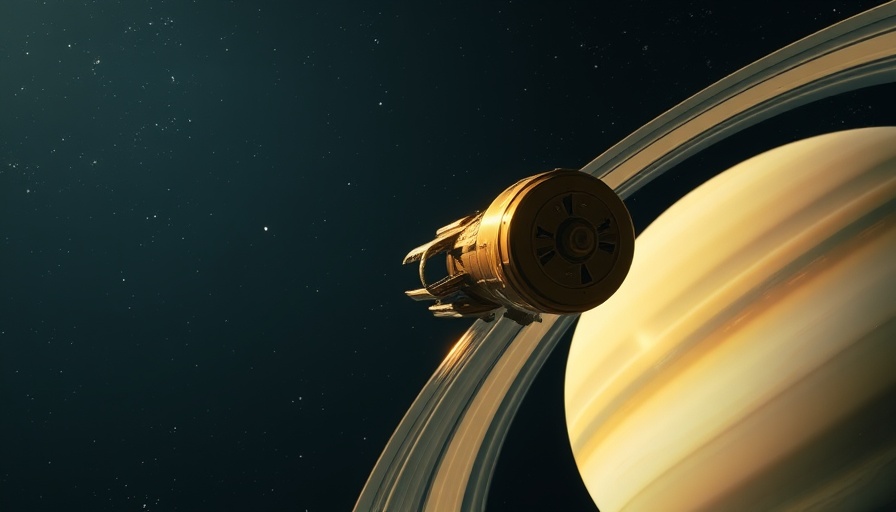
Celebrating Human Ingenuity and Exploration
October 15 marks a significant moment in history not just for the scientific community, but for anyone who marvels at the wonders of space. This day in 1997, NASA's ambitious Cassini-Huygens mission, a groundbreaking study of Saturn and its moons, began its expedition from Cape Canaveral. Launched aboard a Titan IVB/Centaur rocket, the Cassini orbiter, along with its associated Huygens probe, would embark on a journey that would last nearly 20 years and redefine our understanding of the outer solar system.
The Voyage of Cassini
After a seven-year voyage across the cosmos, Cassini entered the orbit of Saturn on July 1, 2004. This pioneering spacecraft was not only the first to orbit Saturn, but it also provided invaluable insights about the planet, its magnificent rings, and its diverse moons. Among its notable discoveries, the spacecraft identified seven new moons orbiting Saturn, with Methone—a remarkably smooth, egg-shaped moon—standing out for its unique features.
The Huygens Probe: A Historic Landing
A significant component of the mission, the Huygens lander, separated from Cassini on December 25, 2004, and successfully landed on Titan, Saturn's largest moon, on January 14, 2005. This monumental event marked the first landing on a moon in the outer solar system and yielded over 350 images, revealing regions of Titan that were previously unimaginable.
Key Scientific Discoveries
The Cassini mission has contributed vastly to our knowledge of Saturn's atmosphere and its enigmatic moons. Noteworthy among its findings is the discovery of hydrocarbon lakes on Titan and geysers of water vapor erupting from Enceladus, both suggesting that these celestial bodies may harbor environments conducive to life. The data retrieved from these missions has led to myriad scientific papers, showcasing the wealth of information the spacecraft gathered during its operational years.
Impacts on Future Space Exploration
The Cassini mission not only set a new standard for future explorations of outer planets but also fostered international collaboration between NASA, the European Space Agency, and the Italian Space Agency. The data collected will continue to inspire and shape upcoming exploratory missions, inviting future generations to dream of and pursue their own explorations in space.
Warm Reflections and Global Recognition
Each October 15 serves as a reminder of humanity's insatiable curiosity and relentless pursuit of knowledge. On this day, we also celebrate the birth of notable figures in the arts such as Penny Marshall and the impactful achievements of leaders like Mikhail Gorbachev and Nelson Mandela—reminding us of the profound connections between scientific advancement and humanity's broader progress.
Take Action For Future Explorations
As we reflect on the achievements of the Cassini-Huygens mission, let us foster a sense of responsibility toward our interest in space exploration. Engage with local science programs, support funding for future missions, and cultivate curiosity in the next generation. Remember, every bit of exploration begins with a dream, a question, and the determination to uncover the answers.
 Add Row
Add Row  Add
Add 




Write A Comment